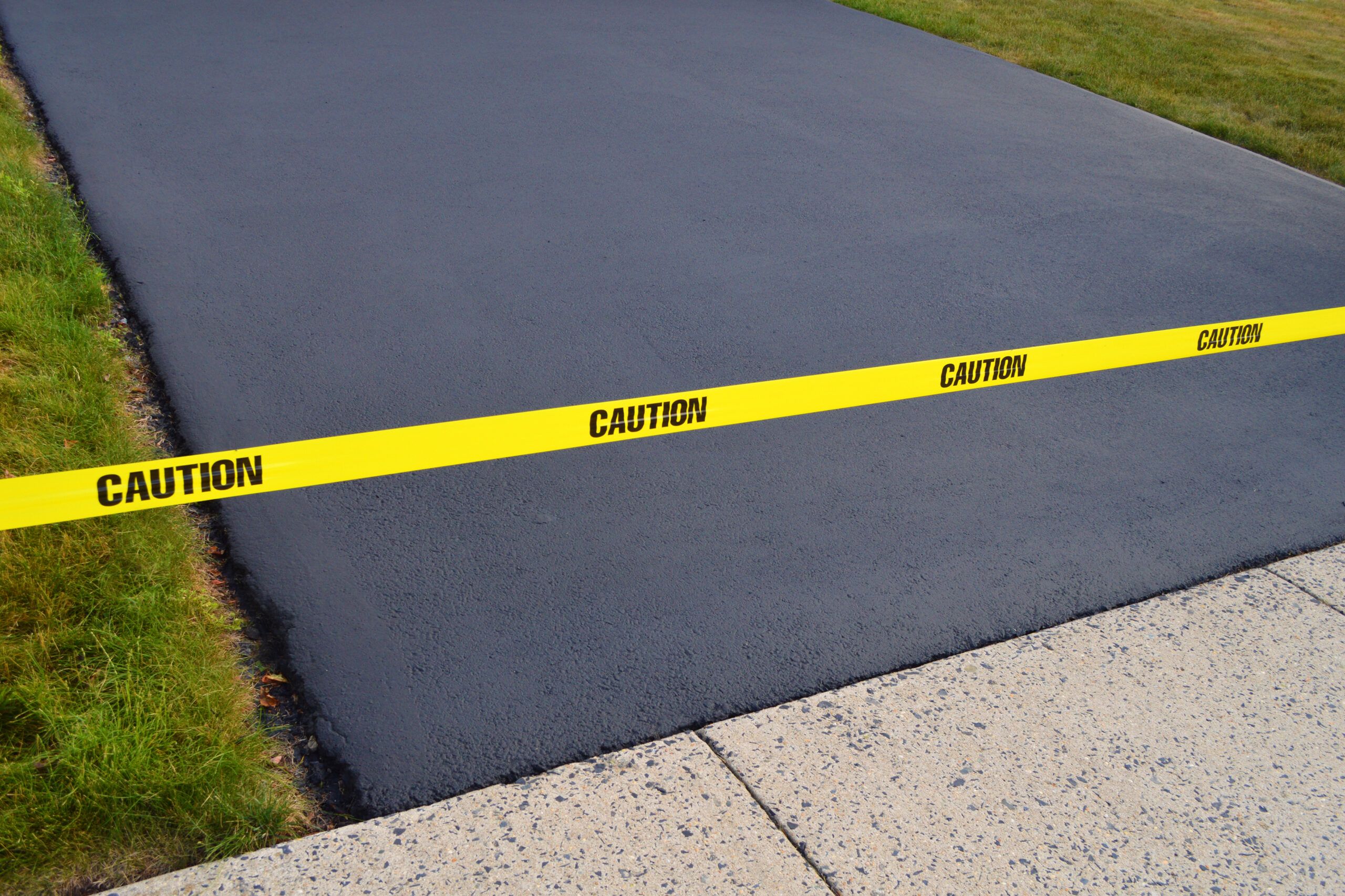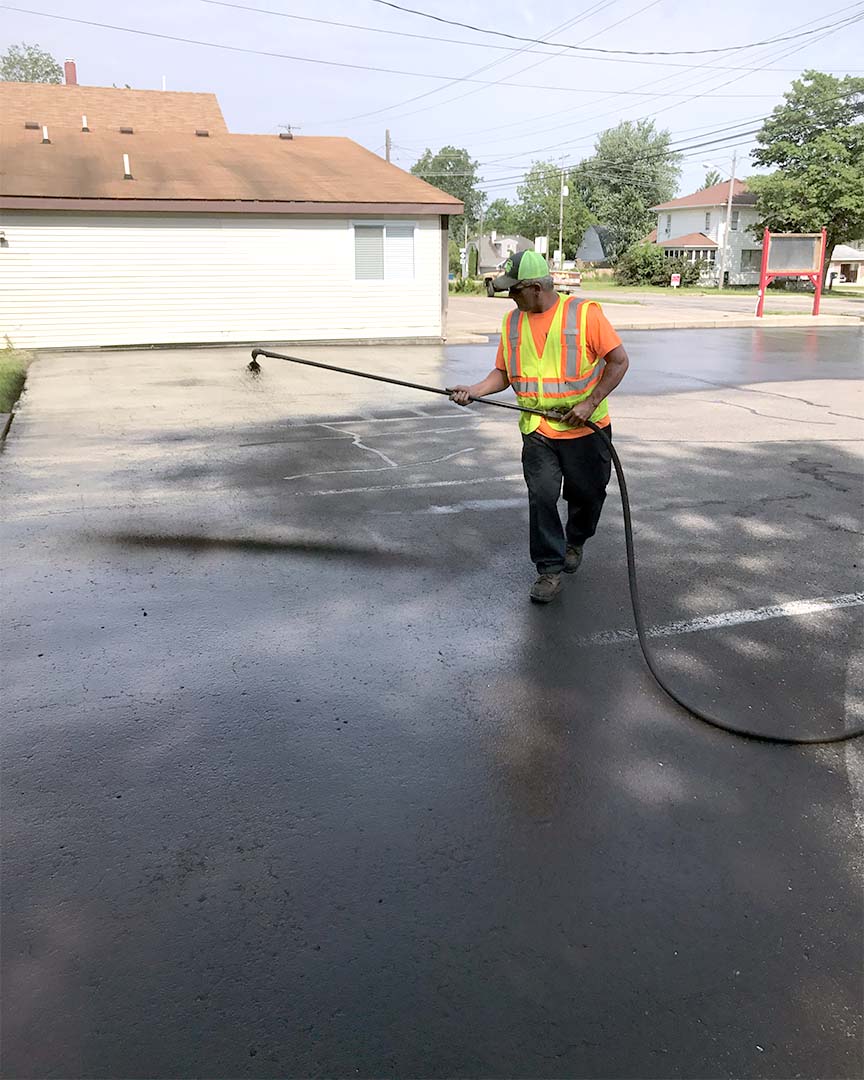Let loose the Prospective: Regrading and Asphalt Sealing for Commercial Rooms
Let loose the Prospective: Regrading and Asphalt Sealing for Commercial Rooms
Blog Article
Warm Mix Asphalt: A Lasting Remedy for Pavement
Hot Mix Asphalt (HMA) has become a leading sustainable choice for pavement options, offering a myriad of environmental advantages and ingenious modern technologies. Its capacity to minimize and recycle products power intake offers an engaging situation for its fostering in roadway building and construction tasks. Furthermore, the lasting efficiency and longevity of HMA make it a favored alternative for infrastructure growth. As the need for environmentally friendly building and construction methods grows, discovering the nuances of HMA's sustainability can give important insights into the future of pavement services.
Environmental Benefits of Hot Mix Asphalt

Furthermore, Warm Mix Asphalt helps to minimize metropolitan warm island effects. Its dark shade takes in sunlight, minimizing the quantity of heat reflected back right into the atmosphere contrasted to lighter-colored sidewalks. This can decrease ambient temperature levels in metropolitan areas, lowering the demand for air conditioning and inevitably lowering energy intake.
Additionally, Hot Mix Asphalt adds to improved stormwater management. Its permeable nature permits water to reenergize and penetrate the sidewalk groundwater products, decreasing runoff and the danger of flooding. These environmental advantages make Hot Mix Asphalt a lasting option for leading highways and roads.
Power Effectiveness in HMA Production
Is energy performance an important factor in the production of Hot Mix Asphalt (HMA)? Energy plays a substantial function in the production of HMA, impacting both expense and ecological sustainability. One crucial aspect of power performance in HMA production is the use of warm mix asphalt (WMA) technologies.
Moreover, innovations in plant modern technologies have actually caused more energy-efficient HMA production processes. Modern plants are developed with features like recycled asphalt sidewalk (RAP) processing capabilities, reliable burner systems, and enhanced insulation, all adding to energy savings. By enhancing energy use in HMA production, the market can lower its carbon impact while maintaining high-grade pavement products. Power efficiency is, consequently, an essential consideration in ensuring the sustainability of Warm Mix Asphalt manufacturing.
Recyclability of Hot Mix Asphalt
The recyclability of Warm Mix Asphalt (HMA) is a pivotal aspect of its sustainability and lasting ecological effect. HMA is one of one of the most recycled materials in the USA, with over 100 million bunches of reclaimed asphalt sidewalk (RAP) being reused annually in brand-new sidewalk building. Reusing HMA uses a number of ecological benefits, such as lowering the need for virgin materials, decreasing energy usage during manufacturing, and reducing the quantity of waste sent out to landfills.
The procedure of reusing HMA includes grating the existing pavement, squashing it right into smaller items, and blending it with new aggregate and asphalt binder to create a recycled mix. visit the website This recycled mix can usually perform as well as or even much better than standard HMA, while requiring fewer basic materials and creating lower greenhouse gas exhausts. By including RAP into new pavement projects, roadway agencies can conserve all-natural resources, lower prices, and reduce the ecological impact of road building and construction and maintenance tasks. On the whole, the recyclability of HMA plays a significant function in promoting sustainable methods within the pavement industry.

Long-Term Performance of HMA
Asphalt pavements demonstrate resilience and durability over an extended duration, showing the long-term efficiency of Warm Mix Asphalt (HMA) The long life of HMA can be connected to its ability to withstand rush hour lots, extreme climate condition, and the impacts of aging. Studies have shown that properly designed and effectively constructed HMA sidewalks can last for 20 years or more with normal upkeep. The key to making best use of the lasting efficiency of HMA lies in using high-quality products, adhering to finest techniques in building, and applying reliable upkeep methods. Correct drain, routine evaluations, and timely repair work are important for preserving the architectural integrity of HMA sidewalks with time. In addition, advancements in HMA modern technology, such as using polymer-modified binders moved here and warm mix asphalt, have further enhanced the toughness and longevity of HMA sidewalks. By focusing on quality construction and upkeep methods, HMA continues to show itself as a economical and sustainable solution for lasting pavement infrastructure.

HMA: Sturdiness and Sustainability
Showing both resilience and sustainability, Warm Mix Asphalt (HMA) has actually come to be a foundation in the construction of resilient pavement infrastructures - commercial parking lot paving. HMA's resilience stems from its capability to hold up against heavy tons, rough weather problems, and high website traffic quantities, making it a reliable selection for highways, freeways, and airport paths. The make-up of HMA, which usually includes aggregates, binder, and filler, plays a crucial role in enhancing its durability and resistance to put on and tear
Moreover, HMA's sustainability depends on its recyclability and energy-efficient manufacturing procedure. The ability to recycle reclaimed asphalt sidewalk (RAP) in new HMA combinations minimizes the demand for virgin products and reduces the ecological effect of sidewalk building and maintenance. Additionally, the power performance of generating HMA lies in its reduced blending temperatures compared to other pavement materials, leading to decreased power consumption and greenhouse gas exhausts.
Verdict
In final thought, hot mix asphalt (HMA) supplies a lasting solution for sidewalk with its ecologically friendly attributes. HMA's recyclability, power performance in production, and long-term toughness make it an environmentally friendly option for roadway building and construction. By preserving natural deposits, lowering waste, and lowering greenhouse gas discharges, HMA plays a critical role in promoting sustainability in framework development. Its capacity to alleviate urban warmth island impacts additionally underscores its value in developing environmentally conscious and resistant pavement systems.
HMA is one of the most recycled products in the United States, with over 100 million heaps of redeemed asphalt sidewalk (RAP) being reused every year in brand-new sidewalk building and construction.The process of reusing HMA entails crushing the existing pavement, squashing it into smaller items, and mixing it with brand-new aggregate and asphalt binder to develop a recycled mix.Asphalt sidewalks show longevity and resilience over an extensive duration, mirroring the long-term performance of Hot Mix Asphalt (HMA) Additionally, innovations in HMA innovation, such as from this source the usage of polymer-modified binders and cozy mix asphalt, have further improved the resilience and long life of HMA pavements. The capability to recycle recovered asphalt sidewalk (RAP) in new HMA mixtures decreases the demand for virgin products and reduces the environmental influence of sidewalk building and upkeep.
Report this page